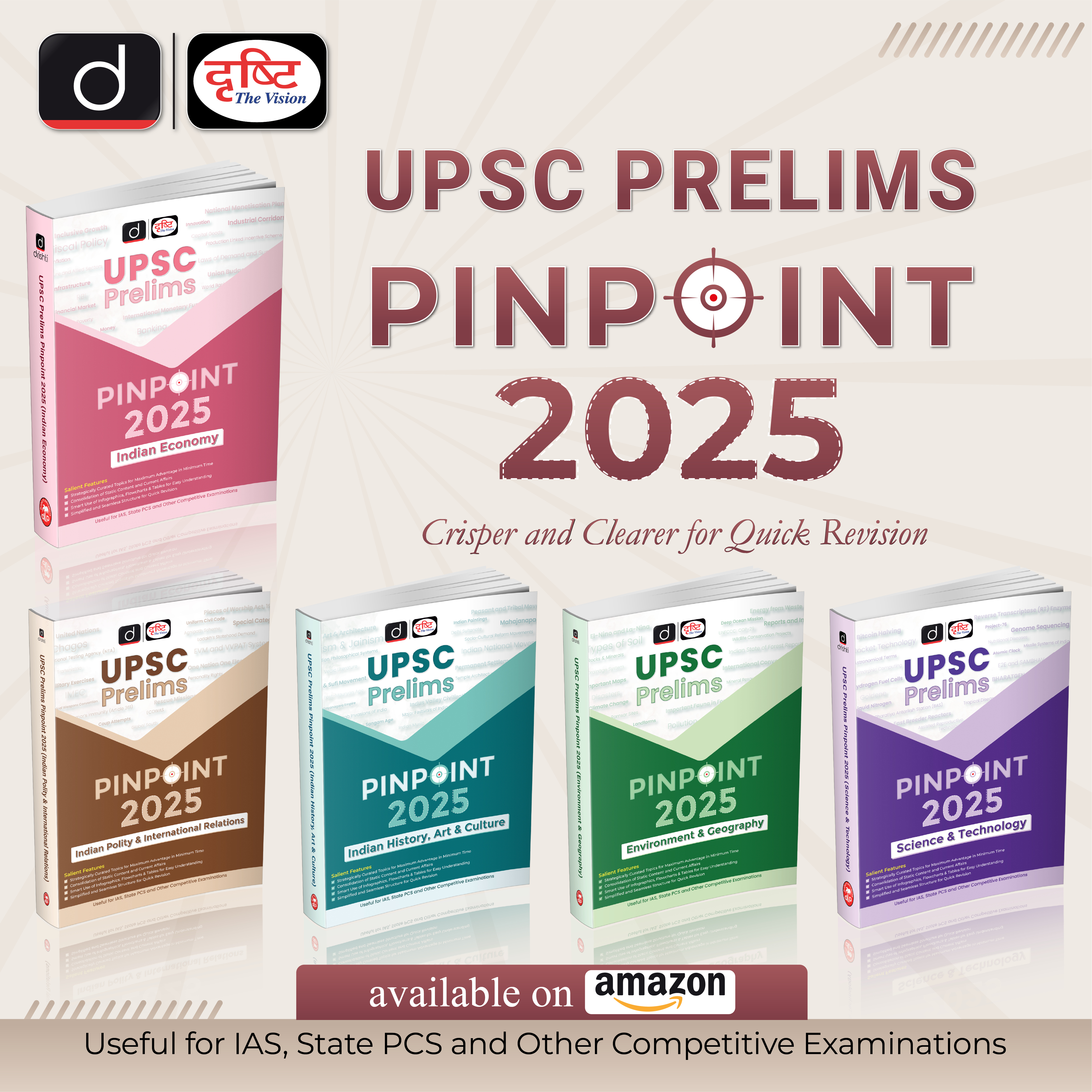Rajasthan Switch to Hindi
PM Unveils Development Projects in Rajasthan
Why in News?
Prime Minister Narendra Modi unveiled and laid the foundation stone of multiple development projects worth over Rs 17,000 crore via video conferencing in Rajasthan.
Key Points
- The announcement came as a part of the 'Viksit Bharat Viksit Rajasthan' programme and encompassed crucial sectors, including roads, railways, solar energy, power transmission, drinking water, and petroleum & natural gas.
- The PM emphasized the significance of the development projects and stressed the importance of rapid development in essential sectors such as rail, road, electricity, and water for the progress of Rajasthan.
- He highlighted the substantial allocation of Rs 11 trillion in 2024 Union Budget for infrastructure development.
- Infrastructure in Rajasthan:
- For highway infrastructure development,various national highway projects worth over Rs 5,000 crore were inaugurated.
- This will improve connectivity in Kota, Udaipur, Tonk, Sawai Madhopur, Boondi, Ajmer, Bhilwara and Chittorgarh.
- These roads will also ensure better connectivity with Delhi, Haryana, Gujarat and Maharashtra.
- For railways, PM laid the foundation stone for eight projects worth approximately Rs 2,300 crore.
- He dedicated the power transmission sector projects worth more than Rs 2,100 crore, in Rajasthan, to the nation.
- He also outlined the PM Surya Ghar Yojna's aim to provide free electricity and facilitate solar panel installations in households, particularly benefiting the middle and lower-middle-class segments.
- The PM also laid the foundation stone for multiple projects under the Jal Jeevan Mission (JJM), worth around Rs 2,400 crore.
- For highway infrastructure development,various national highway projects worth over Rs 5,000 crore were inaugurated.
PM Surya Ghar Yojna
- It is a pioneering government initiative aimed at installing rooftop solar power systems in one crore households across the nation.
- Rooftop solar panels are photovoltaic panels installed on the roof of a building that is connected to the main power supply unit.
- It reduces the consumption of grid-connected electricity and saves electricity costs for the consumer.
- Surplus solar power units generated from the rooftop solar plant can be exported to the grid as per the metering provisions.
- The consumer can receive monetary benefits for the surplus exported power as per the prevailing regulations
Uttarakhand Switch to Hindi
Chevening Scholarship
Why in News?
Uttarakhand government has announced its initiative to support ten outstanding students from the state in pursuing a one-year Master’s programme in the United Kingdom (UK) through the prestigious Chevening scholarship. The state will cover 50% of the expenses, while Chevening India will fund the remaining expenses.
Key Points
- The scholarship covers various expenses including academic fees, travel, accommodation, and visa charges, providing a holistic support system for the beneficiaries.
- Graduates with two years of work experience will qualify for the scholarship, enabling them to pursue higher education or research at any British university. Initially, five women and five men will be chosen for the programme.
- A Memorandum of Understanding (MoU) will be signed between the government and Chevening India. This partnership marks the first of its kind for Uttarakhand.
- It was done earlier in Jharkhand as well.
The Chevening Scholarship
- It is an international scholarship, funded by the British Foreign and Commonwealth Office, that lets foreign students with leadership qualities study at universities in the UK.
- The stated objective of the scheme is to build a network of friends of the UK, who will be future leaders in their countries.
Uttar Pradesh Switch to Hindi
PM to Lay Foundation of Kalki Dham Temple
Why in News?
The Prime Minister will lay the foundation stone of the Shri Kalki Dham Temple in Sambhal district.
Key Points
- The temple is being constructed by the Shri Kalki Dham Nirman Trust.
- The inauguration programme will be attended by many saints, religious leaders and other dignitaries.
- The Prime Minister will also launch 14,000 projects across UP worth more than Rs 10-lakh crore at the fourth Groundbreaking ceremony for investment proposals received during the Uttar Pradesh Global Investors Summit 2023 (UPGIS 2023).
- The projects relate to sectors like manufacturing, renewable energy, Information Technology and IT-enabled services, food processing, housing and real estate, hospitality and entertainment, education, among others.
Uttar Pradesh Switch to Hindi
Western Disturbances to Bring Rain to Uttar Pradesh
Why in News?
According to the India Meteorological Department, Delhi, Punjab, Haryana, and parts of Uttar Pradesh are expected to receive light to moderate rain, thunderstorms, and hailstorms in the coming days with an intense spell of snowfall in the western Himalayan region.
Key Points
- A fresh active Western Disturbance is projected to affect northwest India. The weather system is expected to have widespread impacts, with diverse weather conditions observed across multiple regions.
- The Western Disturbance is expected to cause significant changes in usual weather patterns, and communities are advised to stay prepared for these changes.
- Authorities have been urged to gear up for any necessary measures to ensure public safety.
Western Disturbances
- These are a series of cyclonic storms that originate in the Mediterranean region, travel over 9,000 km to bring winter rains to northwest India.
- A Western Disturbance collects moisture from the Mediterranean Sea, Black Sea, and Caspian Sea and traverses over Iran and Afghanistan before hitting the western Himalayas.
- While the storm systems occur throughout the year, they travel to India mostly between December and April because the trajectory of the subtropical westerly jet stream, which transports them, shifts during the winter months to the rim of the Himalayas.
- For the rest of the year, the jet stream travels from above the Himalayas to the Tibetan Plateau and China. Its trajectory changes as per the position of the Sun.
- Significance for India:
- Western Disturbances are the primary source of snowfall that replenishes the Himalayan glaciers during winter.
- These glaciers feed major Himalayan rivers like the Ganga, Indus and Yamuna as well as myriad mountain springs and rivulets.
- These low-pressure storm systems help farmers in India grow their rabi crop.
- Western Disturbances are the primary source of snowfall that replenishes the Himalayan glaciers during winter.
- Issues:
- The Western Disturbances are not always the harbingers of good weather. Sometimes WDs can cause extreme weather events like floods, flash floods, landslides, dust storms, hail storms and cold waves, destroying infrastructure and impacting life and livelihoods.
India Meteorological Department
- IMD was established in 1875. It is the National Meteorological Service of the country and the principal government agency in all matters relating to meteorology and allied subjects.
- It works as an agency of the Ministry of Earth Sciences of the Government of India.
- It is headquartered in New Delhi.
- IMD is also one of the six Regional Specialized Meteorological Centres of the World Meteorological Organization.
Bihar Switch to Hindi
Ayush Regional Review Meeting
Why in News?
Union Minister of Ayush and Ports, Shipping, and Waterways, Sarbananda Sonowal, stressed the importance of holistic healthcare on a global scale during Regional Review Meeting of six states: Bihar, Chhattisgarh, Jharkhand, Madhya Pradesh, Odisha, and Uttar Pradesh, which was arranged by the Ministry of Ayush in Patna, Bihar.
Key Points
- The Ministry of Ayush is actively supporting state and union territory governments in implementing various initiatives outlined in their State Annual Action Plans (SAAPs) under the Centrally Sponsored Scheme of the National Ayush Mission (NAM).
- With the vision of providing Ayush healthcare services across the country, the NAM aims to strengthen and enhance Ayush healthcare facilities, empowering the public with informed choices.
- The Ministry of Ayush has allocated Rs 1712.54 Crores to seven states—Bihar, Chhattisgarh, Jharkhand, Madhya Pradesh, Odisha, Uttar Pradesh, and West Bengal—under the NAM.
- It also supported the establishment of 58 Integrated Ayush hospitals, with 14 already operational.
- Out of the planned 12,500 Ayush Health and Wellness Centres (AHWCs), 4235 have been supported, with 3439 already functional in these states.
- The states were urged to accelerate the construction of Ayush Educational Institutes and integrated Ayush hospitals.
- The importance of implementing Ayush public health programs outlined in the NAM guidelines, focusing on various interventions for a holistic approach to health was highlighted.
- States like Bihar, Uttar Pradesh, and Chhattisgarh were specifically encouraged to undertake the National Program on Ayush for Morbidity Management and Disability Prevention (MMDP) of Lymphatic Filariasis.
National Ayush Mission (NAM)
- It was launched in September 2014 by the Department of AYUSH under the Ministry of Health and Family Welfare, during the 12th Plan for implementation through States/UTs.
- Now, it is implemented by the Ministry of Ayush.
- The scheme involves expansion of the AYUSH sector to promote holistic health of Indians.
- The Mission addresses the gaps in health services through supporting the efforts of State/UT Governments for providing AYUSH health services/education in the country, particularly in vulnerable and far-flung areas.
Lymphatic Filariasis (LF)
- LF, commonly known as elephantiasis and is considered as a Neglected Tropical Disease (NTD). It is the second most disabling disease after mental health.
- It impairs the lymphatic system and can lead to the abnormal enlargement of body parts, causing pain, severe disability and social stigma.
- The lymphatic system is a network of vessels and specialized tissues that are essential to maintaining the overall fluid balance and health of organs and limbs and, importantly, are a major component of the body’s immune defense system.
- Lymphatic filariasis is a vector-borne disease, caused by infection with parasites classified as nematodes (roundworms) of the family Filarioidea. There are 3 types of thread-like filarial worms which causes lymphatic filariasis:
- Wuchereria Bancrofti is responsible for 90% of the cases.
- Brugia Malayi causes most of the remainder of the cases.
- Brugia Timori also causes the disease.
- Drug Treatment:
- The World Health Organization (WHO) recommends three drug treatments to accelerate the global elimination of lymphatic filariasis.
- The treatment, known as IDA, involves a combination of ivermectin, diethylcarbamazine citrate and albendazole.
- The plan is to administer these drugs for two consecutive years. The life of the adult worm is hardly four years, so it would die a natural death without causing any harm to the person.
- The World Health Organization (WHO) recommends three drug treatments to accelerate the global elimination of lymphatic filariasis.
- Scenario in India:
- Lymphatic filariasis poses a grave threat to India. An estimated 650 million Indians across 21 states and union territories are at risk of lymphatic filariasis.
- Over 40% of worldwide cases are found in India.
- The government launched the Accelerated Plan for Elimination of Lymphatic Filariasis (APELF) in 2018, and as part of intensifying efforts towards elimination, later rolled out IDA treatment (triple drug therapy) in a phased manner.
Jharkhand Switch to Hindi
Caste Census in Jharkhand
Why in News?
Jharkhand will soon see a Caste Census in the state on the lines of neighbouring Bihar.
Key Points
- The CM has directed the personnel department to prepare a draft (SoP for conducting the survey) and place it before the cabinet for approval.
- The caste-based survey will be conducted in Jharkhand based on data collected between 7th January and 2nd October 2023.
Census
- The origin of the Census in India goes back to the colonial exercise of 1881.
- Census has evolved and been used by the government, policymakers, academics, and others to capture the Indian population, access resources, map social change, delimitation exercise, etc.
- First Caste Census as SECC (Socio-Economic and Caste Census):
- SECC was conducted for the first time in 1931.
- SECC is meant to canvass every Indian family, both in rural and urban India, and ask about their:
- Economic status, so as to allow Central and State authorities to come up with a range of indicators of deprivation, permutations, and combinations of which could be used by each authority to define a poor or deprived person.
- It is also meant to ask every person their specific caste name to allow the government to re-evaluate which caste groups were economically worse off and which were better off.
- Difference Between Census & SECC:
- The Census provides a portrait of the Indian population, while the SECC is a tool to identify beneficiaries of state support.
- Since the Census falls under the Census Act of 1948, all data are considered confidential, whereas according to the SECC website, “all the personal information given in the SECC is open for use by Government departments to grant and/or restrict benefits to households.”
Haryana Switch to Hindi
Pact to Share Yamuna Water
Why in News?
Haryana signed an agreement with Rajasthan to share water from Sutlej Yamuna Link (SYL) canal, with it excess water flowing from its Hathnikund barrage, especially during the rainy days.
Key Points
- According to the agreement, the two states will prepare a detailed project report for laying pipelines from Western Yamuna Canal of Hathnikund barrage.
- Three pipes would be meant for Sikar, Jhunjhunu and Churu districts, while an additional pipe will be laid to take water towards southern Haryana through Dadri district.
Sutlej-Yamuna Link (SYL) Canal
- The Issue stems from a controversial 1981 water-sharing agreement drawn up when Haryana was carved out of Punjab in 1966.
- Punjab:
- Punjab vehemently opposes sharing any additional water with neighboring states. They stress that Punjab lacks surplus water and highlights the reduction in their water allocation over the years.
- Many areas in Punjab may go dry after 2029 and the state has already over-exploited its groundwater for irrigation purposes as it fills granaries of the Centre by growing wheat and paddy worth Rs 70,000 crore every year.
- Water in about 79% of the state’s area is over-exploited and in such a situation, the government says sharing water with any other state is impossible.
- Haryana:
- Haryana strongly advocates for the canal's completion, citing a looming water crisis and asserting that Punjab has been utilizing Haryana's share of water.
- It says that providing irrigation is tough for the state and there was a problem of drinking water in southern parts of Haryana, where groundwater has depleted up to 1,700 feet.
- Haryana has been citing its contribution to the central food pool and arguing that it is being denied its rightful share in the water as assessed by a tribunal.




%20MPPCS%202025%20Desktop%20E.jpg)
%20MPPCS%202025%20Mobile%20E%20(1).jpg)










.png)
.png)











 PCS Parikshan
PCS Parikshan

